Barnet Museum and the Battle of Barnet Project are most grateful for the generosity of the Arms and Armour Heritage Trust (AAHT) for their grant to the project.
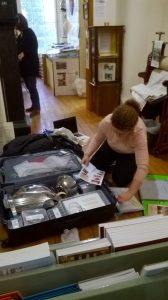 The main feature that used the AAHT grant was Barnet Museum’s Battle of Barnet Loan Box.
The main feature that used the AAHT grant was Barnet Museum’s Battle of Barnet Loan Box.
We introduced the Loan Box to help school children re-discover the Battle of Barnet 1471. Involving local schools by explaining and promoting Barnet’s role in the Wars of the Roses was one of the key objectives of the lottery-funded Battle of Barnet project.
Primary and secondary school children are given a chance to touch and feel the types of artefacts that were in use in 1471 when the Yorkist and Lancastrian armies clashed in the fields north of Barnet. The Loan Box filled with medieval replicas is available for teachers to help them engage and enthuse their pupils. The objects provide a unique opportunity for teachers to be creative in telling the story as well as developing empathy for those who were caught up in this medieval conflict. In addition, the box encourages schools to use the resources in other educational contexts such as creative writing, drama, art, ICT and maths.
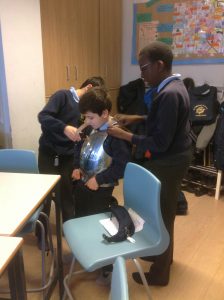 The Battle of Barnet featured a variety of arms and armour, making it a most relevant topic for an AAHT grant. Coming towards the end of the 15th Century the Battle saw the use of traditional weapons such as the longbow, swords, battle-hammers and pikes and also the latest technology – handguns. Cannon had been used in warfare for some years but hand-held firearms were relatively new. They were unpredictable -they could explode in the user’s face, they could mis-fire or not fire at all, but they were a step change in warfare. They did not need as much training as a longbow and the noise alone could cause panic amongst the foe. They were the future. The Battle of Barnet was one of the first battles in England to feature the mass use of hand-guns.
The Battle of Barnet featured a variety of arms and armour, making it a most relevant topic for an AAHT grant. Coming towards the end of the 15th Century the Battle saw the use of traditional weapons such as the longbow, swords, battle-hammers and pikes and also the latest technology – handguns. Cannon had been used in warfare for some years but hand-held firearms were relatively new. They were unpredictable -they could explode in the user’s face, they could mis-fire or not fire at all, but they were a step change in warfare. They did not need as much training as a longbow and the noise alone could cause panic amongst the foe. They were the future. The Battle of Barnet was one of the first battles in England to feature the mass use of hand-guns.
The Loan Box contains a replica hand-gun, arrowheads, arrows, armour, chain-mail, a sallet and even the head of a halberd. The AAHT grant was used to purchase the replica hand-gun; child size armour and sallet, the chainmail, the halberd and arrows/arrowheads.
Responses from the users – schoolchildren and teachers – have been universally positive. Children are fascinated by the feel of actual material as opposed to virtual images; the weight and textures give a brief but gripping idea of the realities of medieval warfare. The artefacts are supplemented by a teachers’ pack which gives background information, activity suggestions, maps and pictures
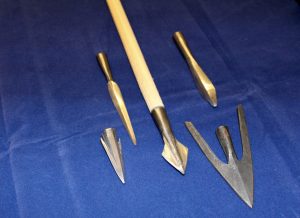 The Loan Box is usually loaned to a school for a half term; this allows the school to build curricular activity around the topic and allows more than one class/year to be involved. One school created a whole-school museum over a weekend inspired by the Loan Box. A number of schools have also used the Box on a weekly basis. Some twelve local schools have used the Box over the last couple of years.
The Loan Box is usually loaned to a school for a half term; this allows the school to build curricular activity around the topic and allows more than one class/year to be involved. One school created a whole-school museum over a weekend inspired by the Loan Box. A number of schools have also used the Box on a weekly basis. Some twelve local schools have used the Box over the last couple of years.
The Loan Box adds to Barnet Museum’s current schools’ programme: this includes school groups visiting the Museum, and Museum volunteers giving assemblies, talks in schools and the loan of banners and child-sized helmets for re-enactment activities.
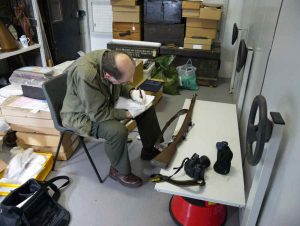
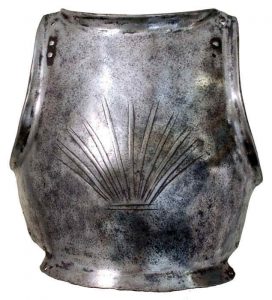 started. It was agreed that the work of cataloguing would be done for free –
started. It was agreed that the work of cataloguing would be done for free –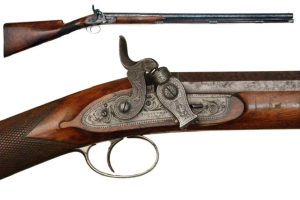
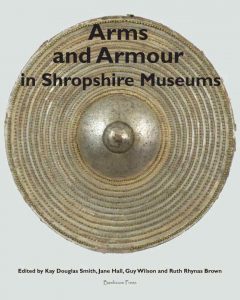 The book, Arms and Armour in Shropshire Museums, has now been published and is available from Basiliscoe Press – ISBN 978-0-9551622-4-4
The book, Arms and Armour in Shropshire Museums, has now been published and is available from Basiliscoe Press – ISBN 978-0-9551622-4-4
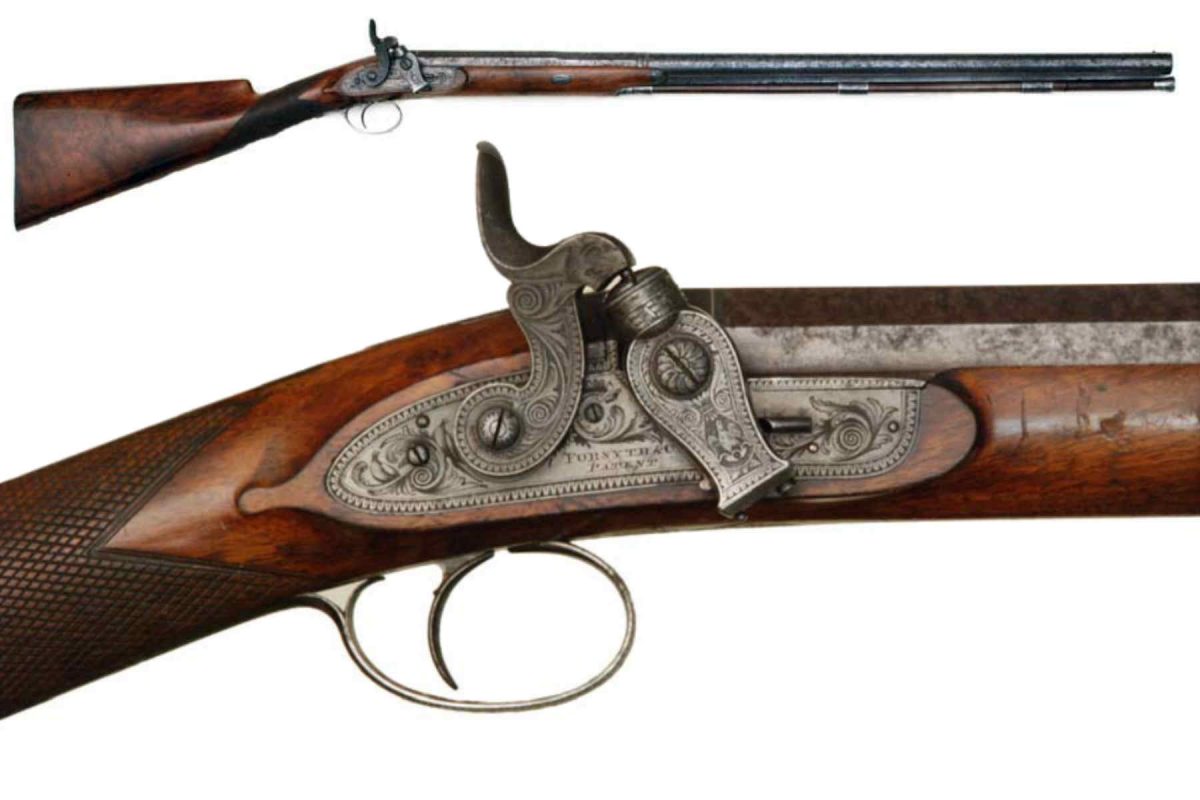
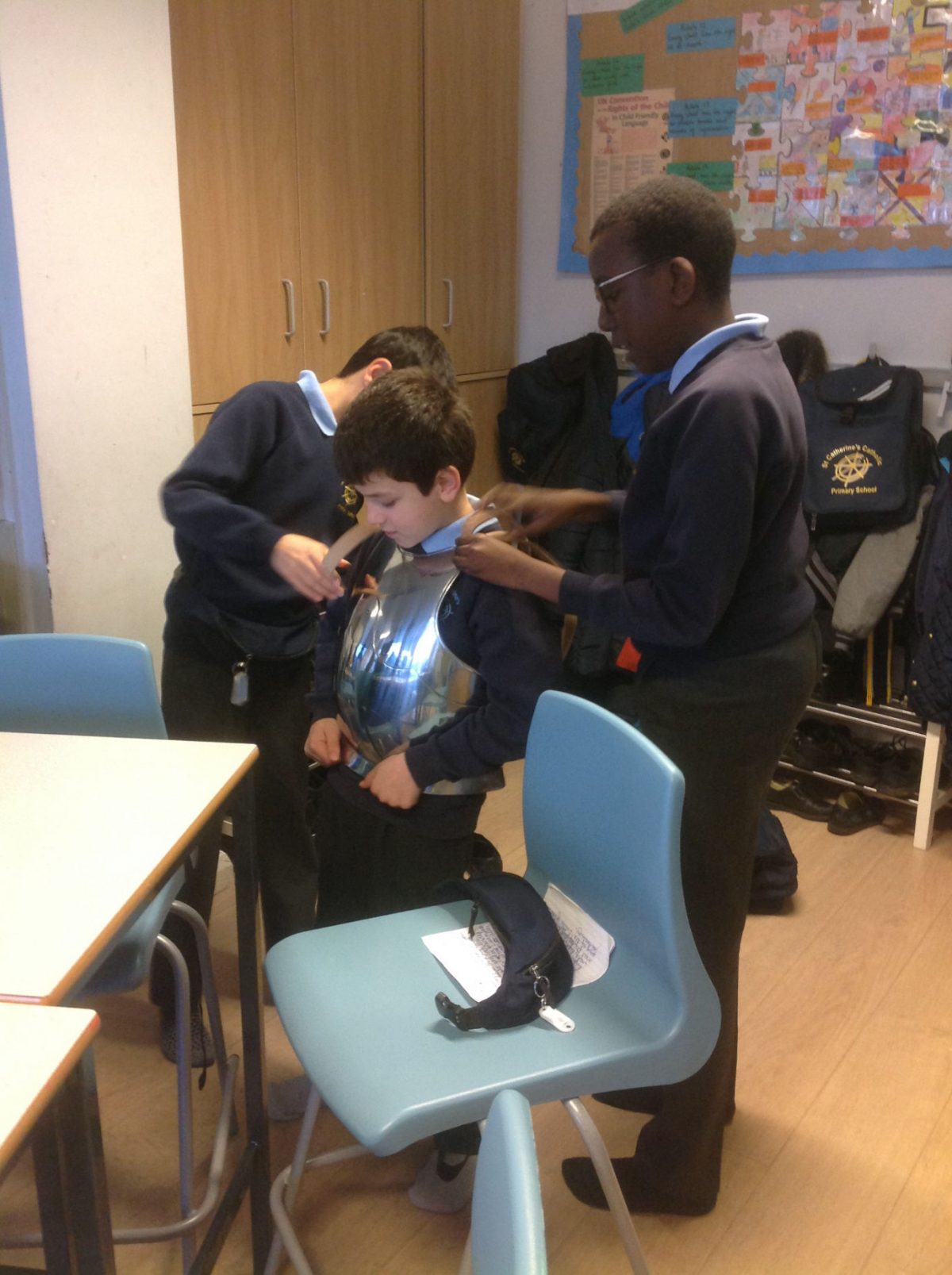


 The Loan Box is usually loaned to a school for a half term; this allows the school to build curricular activity around the topic and allows more than one class/year to be involved. One school created a whole-school museum over a weekend inspired by the Loan Box. A number of schools have also used the Box on a weekly basis. Some twelve local schools have used the Box over the last couple of years.
The Loan Box is usually loaned to a school for a half term; this allows the school to build curricular activity around the topic and allows more than one class/year to be involved. One school created a whole-school museum over a weekend inspired by the Loan Box. A number of schools have also used the Box on a weekly basis. Some twelve local schools have used the Box over the last couple of years.